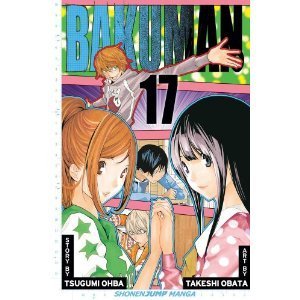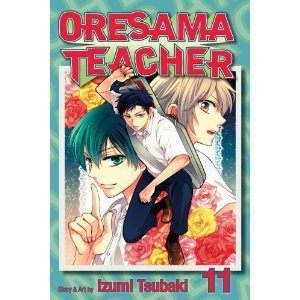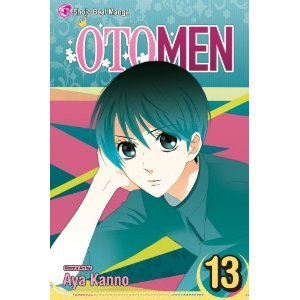S.Q. Eries's Blog, page 61
January 31, 2013
Research Ramblings: Horse Body Fluids and How They Fly
My current work in progress involves chariot racing, and given its substantial equine components, I’ve recruited the aid of horse owners Julie and The Boyz’ Mom to keep it real. (For more about them, read this post.) They love sharing about their horses, and I love learning from them, and hopefully you’ll get some entertainment out of our exchanges.
I recently revised a scene involving messengers on horseback. My critique group didn’t feel connected to the main character, and I decided to elaborate on the sensory details as these riders come galloping up.
The thing is, I’ve gotten close to horses before, but not after they’ve galloped for miles. And while I understand horses generate a variety of body fluids, I’ve no idea what their aerodynamics are.
So of course I went to my horse experts to find out if any of the following could happen:
A. Sweat from the horses landing on my MC
B. Foam( spit) from the horses’ mouths landing on her
C. Her getting a big whiff of the smell of horse sweat
The last one scenario, by the way, was based off my experiences with my runner husband. After a marathon, I can smell him coming.
As for the answer… apparently all of them are possible.
Julie said:
A horse that is accepting of a bit will have foamy drool, and it can fly everywhere, including all over their chest and front legs. If the horse shakes its head, it could certainly fly all over. Same with lather, again, depending on how hot the horse is. If the horse is right in front of her, it would be breathing hard from a long gallop, so she could feel the horse huffing on her. I don’t think horses stink with they are working, but i am probably immune. Most people who work around horses are.
The Boyz’ Mom added:
Yes indeed … Julie is on the money.
Horse sweat smells sweet and warm like musk or sandalwood. I love it.
Horse sweat and saliva can goooo flying to be sure.
The sweat is foamy and the saliva can be like a big foam stringer. I’ve been pelted many a time. Most horse people get their share so no biggy.
I love her description of the aroma of horse. Perhaps perfumers should take note and investigate horse perspiration as a potential new ingredient. (Or maybe they already use it and we just don’t realize it  )
)
At any rate, I am indebted to my experts once more (thank you!!!) and reminded yet again that a horse-sized helping of gross is all part of being an equestrian.


January 28, 2013
Manga Review: Bakuman Vol. 17
 Bakuman is the latest collaboration of Ohba and Obata, the creators of the wildly popular Death Note series. Unlike Death Note, Bakuman is more or less grounded in reality, but it is no less entertaining as it follows the ups and downs of a mangaka duo as they strive to make it big in the publishing world!
Bakuman is the latest collaboration of Ohba and Obata, the creators of the wildly popular Death Note series. Unlike Death Note, Bakuman is more or less grounded in reality, but it is no less entertaining as it follows the ups and downs of a mangaka duo as they strive to make it big in the publishing world!
This series is a personal favorite of mine, and Viz Media has just released Volume 17. (My reviews of earlier Bakuman volumes can be found here.)
Back Cover Blurb
As the veteran manga artists start taking over Weekly Shonen Jump, the younger artists feel the pressure. But what is behind this sudden surge of older artists making a comeback in the magazine? And what is the connection between Azuma and Moritaka’s late uncle?
The Review
When Nanamine got trounced by Team Ashirogi a couple volumes back, I was pretty certain he’d return to the story at some point as a reformed mangaka. Well, he is back, but he’s a bigger sore loser than I thought. The Shinjitsu Corporation manga machine arc feels like a rehash of Nanamine’s previous showdown against PCP. The scope is grander with Nanamine’s father’s money backing him and the various Team Fukuda creators wanting to take him down, but the overall feel of this battle is the same. Even so, the plot keeps you interested with the sorry plight of the older mangaka, and the ultimate outcome has a surprising and rather satisfying twist.
Interestingly, Taro Kawaguchi features prominently in these chapters, and it’s interesting that Ohba-sensei seems to incorporate some of Kawaguchi’s “stand-alone that doesn’t stand alone” technique into Volume 17. While none of the chapters are stand-alone stories, they do revisit a number of things unanswered in the early volumes, such as why Moritaka’s grandfather kept Taro Kawaguchi’s studio untouched all those years.
Ohba-sensei also uses this technique with the editor-in-chief’s unexpected transfer from Jump. While his leaving doesn’t impact Team Ashirogi’s as directly as when they lost and then regained Hattori as editor, it does provide the framework to show how far they and rival Eiji have come. His upcoming departure also sets the stage for the young mangaka to focus on their original rivalry once more, which, after Nanamine’s extreme strategies, will be a refreshing change.
In Summary
Nanamine returns, and he’s more determined to destroy Ashirogi than ever before! Sadly, his methodology hasn’t changed much so the rematch is very similar to their first showdown. However, the final outcome does have an unexpected and interesting twist, and we gain some interesting backstory about Moritaka’s uncle thanks to old-timer mangaka Azuma and the editor-in-chief.
This title is highly recommended for young teens and up.
First published at the Fandom Post.


January 24, 2013
Komazawa Festival Postscript and New Year’s Card
 Today I’ve got a fun postscript to my Japan Pop Tour. In the last post in that series, I described the fabulous time we had at the Komazawa Girls’ School Festival. Indeed, it was so fabulous that when we returned to the United States, we sent them a thank you note. Sounds old-fashioned, I know, but we really wanted to express our gratitude and figured the school administration and maybe the PTA would get a kick out of a letter from foreigners. So we wrote up a thank you card in English (from the number of English speakers we encountered, we figured someone at the school could translate), put in a couple festival photos, addressed it to the principal, and sent it off.
Today I’ve got a fun postscript to my Japan Pop Tour. In the last post in that series, I described the fabulous time we had at the Komazawa Girls’ School Festival. Indeed, it was so fabulous that when we returned to the United States, we sent them a thank you note. Sounds old-fashioned, I know, but we really wanted to express our gratitude and figured the school administration and maybe the PTA would get a kick out of a letter from foreigners. So we wrote up a thank you card in English (from the number of English speakers we encountered, we figured someone at the school could translate), put in a couple festival photos, addressed it to the principal, and sent it off.
We weren’t expecting a response so imagine our surprise three weeks later when we received a letter from Japan! And we were doubly surprised to see it was from Komazawa students! As mentioned in my Komazawa Festival post, one girl was especially helpful to us, and one of the pictures we sent the school was me posing with her and her class. Apparently, the letter went to her class, and they wrote back and included an e-mail address.
So in a strange and wonderful way I’ve gained Japanese penpals. The image attached to this post is the card they sent for New Year’s. Americans send greeting cards during Christmas season, but the Japanese tradition is to send New Year’s cards. According to my Okinawan friend, the card says:
Happy New Year!
Wish you health and happiness throughout the year
(It mentions nothing about the snake, but I’m guessing it refers to the lunar year of the snake.)
I wish the girls at Komazawa and all you readers the same. May 2013 be full of joy and blessing for you!


January 19, 2013
Writing Contest Alert: Pitch-A-Partner Festival and GLA “Dear Lucky Agent” Contest!
For those of you who:
Have critique partners and
Write middle grade or YA
check out the Pitch-A-Partner Festival (PAPfest)! This contest is being hosted by RC Lewis, MarcyKate Connolly and Mindy McGinnis, an amazing trio of writers with whom I’ve had the privilege of swapping manuscripts.
The premise of their contest is that writers pitch their critique partner’s project, and their team will decide whose pitching abilities are so strong that they’re interested in seeing the pitcher’s own project.
Agents participating in the PAPfest are:
Laura Bradford of Bradford Literary
Jennifer Laughran of Andrea Brown Literary
Pooja Menon of Kimberley Cameron
Adriann Ranta of Wolf Literary
Suzie Townsend of New Leaf Literary
Tina Wexler of ICM
The contest begins Wednesday, Jan 23 at 8 AM EST! For more details about entering and the prizes, etc, go to Mindy’s website.
And just as a reminder for those with finished manuscripts in either science fiction or YA, you have till the end of the month to enter the Guide to Literary Agents (GLA) blog’s 13th (free!) “Dear Lucky Agent” Contest.


January 18, 2013
Writing Contest Alert: GLA “Dear Lucky Agent” Contest!
For those with finished manuscripts in either science fiction or YA, the Guide to Literary Agents (GLA) blog is holding its 13th (free!) “Dear Lucky Agent” Contest. The judging agent, by the way, is Victoria Marini, an associate literary agent with the Gelfman Schneider Literary Agency.
HOW TO SUBMIT
E-mail entries to dearluckyagent13@gmail.com. Paste everything. No attachments.
WHAT TO SUBMIT
The first 150-200 words of your unpublished, book-length work of your sci-fi novel or young adult novel. You must include a contact e-mail address with your entry and use your real name. Also, submit the title of the work and a logline (one-sentence description of the work) with each entry.
Please note: To be eligible to submit, you must mention this contest twice through any social media. Please provide a social media link or Twitter handle or screenshot or blog post URL, etc. and notes with your entry. For more details go to the GLA website.
PRIZES!!!
Top 3 winners all get: 1) A critique of the first 10 double-spaced pages of your work, by your agent judge. 2) A free one-year subscription to WritersMarket.com ($50 value)!
For more details about the contest, go to the GLA website!


January 17, 2013
Manhwa Review: Aron’s Absurd Armada Vol. #1

An oft-used archetype in popular literature are pirates. Pirate stories are so numerous nowadays, you can find all sorts of buccaneers, ranging from romantic to sly to sinister, and now joining to the ranks of Captain Hook and One Piece’s Luffy is the idiot pirate Aron!
Back Cover Blurb
On a whim, Aron Cornwall decides he wants to live a pirate’s life of thrills, sailing on the high seas in search of distant lands and buried treasure. And when you’re the son of a duke, you generally get what you want. Accompanied by his reluctant manservant, Robin, Aron scrounges up a crew – including a cook who cannot cook, a transvestite assassin, and a boy (girl?) genius – and sets off on the craziest pirate adventure you’ve ever seen!
The RevieW
If you’re looking for an introductory manhwa (Korean graphic novel) for someone used to Western comic strips, consider Aron’s Absurd Armada. Buccaneers on the high seas and European-style royalty in castles comprise the characters and settings, and although story arcs last several pages, they’re presented in comic strip-sized bites.
The format is similar to the Japanese 4-koma with four panels read top to bottom, but Armada’s format is slightly wider. Occasionally, Kim divides panels into smaller sections to squeeze in more details. Each strip also includes a side illustration based on the main punchline. Some Korean cultural references are made, but they are explained with footnotes. In addition to the strips, a few arcs in full-page format are interspersed through the book. The entire manhwa is printed in color on glossy stock, and except for smudges on a couple pages, the print quality generally does justice to Armada’s elaborate period costumes.
The title is Aron’s Absurd Armada, but while the main character is Aron and he is absurd, he doesn’t really have an armada. Instead, as the back cover declares, Aron and company are pirates. But it would be more accurate to say Aron is a wannabe pirate with a crew of misfits compelled to follow him.
Most of the comedy stems from the fact that Aron has no business being a pirate. The son of a duke, Aron is a spoiled imbecile with zero fighting ability and no sense of responsibility. Wealthy as he is, he has no need for nor interest in obtaining booty. The one time his crew goes on a treasure hunt, he doesn’t bother to join them. He simply wants to be known as a pirate because he’s bored and thinks they’re cool.
Obviously, such an idiot can’t survive on his own. Thus we have Robin, Aron’s bodyguard. Beautiful and vain, Robin’s narcissism is only matched by his love for money. Between the sizable allowance received from Aron’s overindulgent mother and Robin’s unsurpassed sword skills, they keep the rest of the crew in line. That crew, by the way, consists of a girl whom everyone thinks is a gay boy; a transvestite assassin hairdresser; a brawny chef who can’t cook; and two flunkies who serve as the straight men for this ridiculous cast.
With this hodgepodge of characters, the plot is less action and adventure and more about the mental damage they inflict upon one another. In one arc, Aron’s ship has a run-in with the Marines, but it’s not so much a naval battle as it is about Aron putting the Marines’ lieutenant Luther, who just happens to be Aron’s childhood pal, into a pinch. By the way, this Luther is also the illegitimate son of an admiral; gets no respect from his subordinates; endures a peculiar bullying from his half-brother; and is madly in love with his half-niece who happens to be his ensign. That’s the type of craziness Armada has in store for readers.
I should mention that this title is rated older teen, partly because of violence and language, but also because the characters continually rip on one another about cross-dressing, sexual orientation, and BL (boys love).
Regarding the artwork, don’t let the front cover fool you. Kim does use deformed characters when the occasion warrants, but for the most part, illustrations are clean shojo-style artwork with a predominantly attractive cast. And although Yen Press presents this book as Volume 1 of Armada, it actually contains Volumes 1 and 2 of the manhwa as released in Korea and provides the character introduction pages used in both.
In Summary
Beware Aron the pirate! Actually, the ones that really need to look out are Aron’s misfit crewmates as their inept leader gets into one scrape after another. If you want to see all the havoc that one self-centered duke can cause country, family, and friends by charging onto the high seas with a gender bending crew, give Armada a try. And while the $18.99 cover price might seem a bit steep, the book is printed in full color and actually contains Volumes 1 and 2 of the original Korean releases.
First published at the Fandom Post.


January 9, 2013
Best Manga of 2012
So at the close of 2012, Chris, the editor over at the Fandom Post, asked his contributors to write a list of our top five for the year. That was a little challenging for me because I’m pretty bad about remembering exactly what I’ve read and when I’ve reviewed it. But after slogging through my manga pile and my 2012 reviews, these are the gems I pulled out.
 1). Bakuman: Viz’s translation of this series is up to its 17th volume, and I still find myself eagerly anticipating each new release. A manga about mangaka might not sound too interesting, but the team of Ohba and Obata has turned Bakuman into a battle manga where the magazine Jump is the battleground their characters use to prove themselves. Although some of the recent challenges for Team Ashirogi have veered into the realm of unrealistic, the plot remains engaging and the main characters relatable even as they grow beyond their teenage years.
1). Bakuman: Viz’s translation of this series is up to its 17th volume, and I still find myself eagerly anticipating each new release. A manga about mangaka might not sound too interesting, but the team of Ohba and Obata has turned Bakuman into a battle manga where the magazine Jump is the battleground their characters use to prove themselves. Although some of the recent challenges for Team Ashirogi have veered into the realm of unrealistic, the plot remains engaging and the main characters relatable even as they grow beyond their teenage years.
 2) Bride’s Story: I love so much about this title – its historical setting, Mori-sensei’s exquisite artwork, its vibrant characters. It is a slice of life tale, meaning the story often slows to showcase different aspects of Amir’s culture, such as food and needlework, but a slower pace doesn’t mean a boring story. The bonds Amir forges in her new home draw readers in, and conflict between different tribes and European forces keep the tension up. The main reason Bride’s Story didn’t take first place is the age gap between Amir and Karluk. I don’t have a problem with their marriage per se; arranged marriages are the norm for many cultures. However, Mori-sensei draws Amir as a mature woman while Karluk looks like a little kid so there is a squick factor when Amir develops romantic feelings for him.
2) Bride’s Story: I love so much about this title – its historical setting, Mori-sensei’s exquisite artwork, its vibrant characters. It is a slice of life tale, meaning the story often slows to showcase different aspects of Amir’s culture, such as food and needlework, but a slower pace doesn’t mean a boring story. The bonds Amir forges in her new home draw readers in, and conflict between different tribes and European forces keep the tension up. The main reason Bride’s Story didn’t take first place is the age gap between Amir and Karluk. I don’t have a problem with their marriage per se; arranged marriages are the norm for many cultures. However, Mori-sensei draws Amir as a mature woman while Karluk looks like a little kid so there is a squick factor when Amir develops romantic feelings for him.
 3) Spice and Wolf: Like many fantasy stories, Spice and Wolf has a medieval style setting with complex geopolitical elements, but what sets this manga apart is its economics bent. Knights, priests, and kings do exist in this world, but the main characters are a young merchant and his wisewolf companion, who is thoroughly knowledgeable about humans and their business dealings. The pair get into one exciting scrape after another in the pursuit of profit, and as you follow their adventures, you might just pick up some economics principles along the way.
3) Spice and Wolf: Like many fantasy stories, Spice and Wolf has a medieval style setting with complex geopolitical elements, but what sets this manga apart is its economics bent. Knights, priests, and kings do exist in this world, but the main characters are a young merchant and his wisewolf companion, who is thoroughly knowledgeable about humans and their business dealings. The pair get into one exciting scrape after another in the pursuit of profit, and as you follow their adventures, you might just pick up some economics principles along the way.
 4) Bamboo Blade: A sports manga about a girls kendo team, this title is both uplifting and funny. Kendo may not be a mainstream American sport, but the quirky cast of Bamboo Blade presents it in a way even newbies can enjoy. Although it does go a bit overboard with its “alternative manga rendition” of events, you can’t help but get swept up in the characters’ enthusiasm as they strive to improve themselves.
4) Bamboo Blade: A sports manga about a girls kendo team, this title is both uplifting and funny. Kendo may not be a mainstream American sport, but the quirky cast of Bamboo Blade presents it in a way even newbies can enjoy. Although it does go a bit overboard with its “alternative manga rendition” of events, you can’t help but get swept up in the characters’ enthusiasm as they strive to improve themselves.
 5) 07 Ghost: A supernatural action title, 07 Ghost tells the tale of an underdog hero caught in an epic battle between good and evil. It’s definitely shonen fare, but female readers will appreciate the fine looking bishounen that make up the cast. Go!Comi originally licensed the title but only released the first few volumes before they stopped publishing in October 2009. However, Viz Media has recently picked up the series so hopefully all the adventures of Teito and his friends will finally get translated to English!
5) 07 Ghost: A supernatural action title, 07 Ghost tells the tale of an underdog hero caught in an epic battle between good and evil. It’s definitely shonen fare, but female readers will appreciate the fine looking bishounen that make up the cast. Go!Comi originally licensed the title but only released the first few volumes before they stopped publishing in October 2009. However, Viz Media has recently picked up the series so hopefully all the adventures of Teito and his friends will finally get translated to English!
First published at the Fandom Post.


January 7, 2013
Manga Review: Oresama Teacher Vol. #11
 Mafuyu is a high school delinquent who wants to turn over a new leaf. So when she transfers schools, she thinks she’ll finally be able to live the life of a normal girl. There’s just one problem: her teacher Mr. Saeki is a bigger delinquent than she is and is out to take advantage of her fighting skills!
Mafuyu is a high school delinquent who wants to turn over a new leaf. So when she transfers schools, she thinks she’ll finally be able to live the life of a normal girl. There’s just one problem: her teacher Mr. Saeki is a bigger delinquent than she is and is out to take advantage of her fighting skills!
Oresama Teacher is a shojo manga that offers humor of the silly variety. Volume 11 has recently been released, and you can read on for the review. (For those who are interested, you can click here for my reviews of earlier volumes).
Back Cover Blurb
Hayasaka has been gloomier than usual since he hasn’t been able to see Super Bun in a long time. Shinobu butts his ninja nose in and suggests Hayasaka and Super Bun go on a date for Christmas Eve. Mafuyu very reluctantly agrees to play “matchmaker,” and dons the rabbit mask to help cheer up her friend. But the date goes much better than she expected! How is she going to deal with Hayasaka now?
The RevieW
Volume 11 starts off with two holiday themed chapters. First, it’s Christmas time, and with Hayasaka in a funk after missing Super Bun’s last appearance, Mafuyu arranges for him to have a date with his hero. Tsubaki-sensei’s gotten some mileage out of Hayasaka’s Super Bun crush, but she milks it for what it’s worth by having a giddy Hayasaka and a self-conscious Super Bun/Mafuyu touring the town doing typical Christmas date stuff. Then it’s New Year’s at home with Mafuyu’s former minions Kangawa and Maizono. The humor in this chapter is a little more difficult for Western readers to understand as most jokes require knowledge of hot pots and Japanese New Year’s traditions, but you do get to enjoy Mafuyu having fun with her old pals.
After ringing in the new year, Tsubaki-sensei picks up with the next challenge to the Public Morals Club: Ayabe Reito. The arc begins well, presenting an enemy with an astounding strength that belies his nondescript appearance. His everpresent guitar case, bouts of illness, and the fact that he’s the only officer that wants out of the Student Council add to his mystique.
Mafuyu’s battles of late have been under the guise of Natsuo or Super Bun so it’s refreshing when Ayabe recognizes her actual capabilities. His directness forces Mafuyu to respond in kind and revert to the intensity of her gang leader days. Tsubaki-sensei truly draws you in as Mafuyu struggles to figure out how to take Ayabe down on her own. Once the secret behind his power is revealed though, it’s a bit of a letdown. The intensity disappears, and their duel devolves into a kind of silliness that leaves you wondering how Ayabe could have ever posed any kind of threat.
In Summary
After some holiday themed comedy, Tsubaki-sensei introduces the Public Morals Club’s next threat: the mysteriously powerful Ayabe. Unlike previous Student Council members, Ayabe recognizes Mafuyu for who she is and forces her to battle him with everything she’s got. But once Mafuyu figures out the trick behind his strength, the ultimate outcome of their fight is rather disappointing.
First published at the Fandom Post.


January 3, 2013
Manga Review: Otomen Vol. 13
There are many stories about tomboys, girls with boyish tendencies, but what about the opposite? In fact, what would you call a boy with girly interests? The manga answer is: Otomen!
 For those unfamiliar with this series by Aya Kanno, “otomen” is a play on the Japanese word otome (乙女), meaning “young lady” or “mistress,” and the English word “men.” The plot centers around Asuka Masamune, the manliest guy in his high school. However, he has a secret: the things he really loves are sweets, shojo manga, and sewing. He hides this part of his life from everyone until he meets Ryo Miyakozuka, the least feminine girl in school. Volume 13 of the series has just come out and you can read on for the review! (For those interested, you can click here for my reviews of earlier volumes).
For those unfamiliar with this series by Aya Kanno, “otomen” is a play on the Japanese word otome (乙女), meaning “young lady” or “mistress,” and the English word “men.” The plot centers around Asuka Masamune, the manliest guy in his high school. However, he has a secret: the things he really loves are sweets, shojo manga, and sewing. He hides this part of his life from everyone until he meets Ryo Miyakozuka, the least feminine girl in school. Volume 13 of the series has just come out and you can read on for the review! (For those interested, you can click here for my reviews of earlier volumes).
Back Cover Blurb
Ryo ends up coaching a high school judo team, but women aren’t allowed at that school! She finds a way around this obstacle, but the real challenge comes when she finds herself facing off against… Asuka?!
The Review
With Asuka finally aware of his dad’s true identity, that leaves Kiyomi Masamune’s anti-otomen attitude and Asuka’s never-quite-dating relationship with Ryo as the main plot drivers for this series. In regard to the Asuka/Ryo romance, it’s been dragging for a while. In Volume 13′s opening chapter, even Ryo’s family expresses concern over the lack of progress between her and Asuka. For readers who’ve been feeling frustrated, Kanno-sensei finally delivers with a Ryo-centered arc in this volume.
The story’s set up to create tension between the couple when Ryo starts coaching judo at Odo Boys’ School but doesn’t tell Asuka. Yet despite Juta’s suspicions and the Odo team captain’s crush, you never really feel that Asuka’s relationship with Ryo is in any real danger, especially when Asuka immediately recognizes the “suspicious boy at Ryo’s house” to be Ryo herself, but it does push Asuka into mopey mode as he wonders if there’s truly anything between him and Ryo.
Ryo for the most part is oblivious–as usual–to the feelings of the men around her, but even she comes to the realization that her actions may have hurt Asuka’s feelings. The resolution is almost a parody of shonen “communicating through fists” with the two of them determined to “clash head-on” in the Odo-Ginyuri judo match. Fortunately for the romantics, a last-minute development changes the match from that of a couple wanting to work things out to a duel between boys interested in the same girl. And when Ryo finally does make up with Asuka, she does it in an unexpectedly romantic way. Sadly, Kanno-sensei cuts that scene short, keeping us from seeing Asuka’s response to Ryo’s Christmas gift, but she makes up for it with a Valentine’s Day chapter guaranteed to delight Asuka/Ryo fans.
In Summary
Finally, progress in Asuka’s relationship with Ryo! Kanno-sensei takes her time getting to it, working around a plot that has Ryo cross-dressing in order to coach a boys’ judo team, but readers get real confirmation of Ryo’s feelings toward Asuka at last. However, Ryo/Asuka fans will be even more thrilled with Asuka’s Valentine’s Day gift at the end of the volume!
First published at the Fandom Post.


December 31, 2012
Manga Review: Message to Adolf, Part 1
 Osamu Tezuka is one of the giants of manga. While he’s best known for Astro Boy, he has an extensive list of works most Westerners are unaware of. But Vertical has recently made one more of his books available in English: his espionage thriller Message to Adolf.
Osamu Tezuka is one of the giants of manga. While he’s best known for Astro Boy, he has an extensive list of works most Westerners are unaware of. But Vertical has recently made one more of his books available in English: his espionage thriller Message to Adolf.
Back Cover Blurb
It is 1936 in Berlin, Nazi Germany. A Japanese reporter named Sohei Tohge is covering the Berlin Olympic Games for the Japanese press. As he sits in the Japanese press box watching the many track and field events of the day, he receives a call from his younger brother Isao, who has been studying in Germany as an international student. The two make plans to meet as Isao mentions he has something of importance to share with his sibling. While Sohei initially thinks his little brother may have found a young frau, Isao’s tone is clearly that of one who is troubled by topics much heavier than romance.
When Sohei arrives at Berlin University, he finds his brother’s room has been through some sort of violent ordeal. A mysterious message was left on a note pad and a window was left wide open, and tangled in the branches of a tree directly below Isao’s window rested his dead body. Isao was murdered.
Sohei immediately attempts to investigate the murder, but all traces of his younger brother’s study in Germany have instantly vanished!
The RevieW
For those who know Osamu Tezuka only for Astro Boy, Message to Adolph will be a jarring shift in pace. There’s no science fiction here; this manga is a realistic political thriller set during the time of Nazi Germany and Japan’s invasion of China.
The story begins with newspaper correspondent and former college athlete Sohei Toge. He introduces himself as a “secondary character,” but at least for Volume 1, he is the star. While Toge is in Berlin covering the 1936 Olympics, his brother, an exchange student living in Germany, turns up dead. When Toge tries to investigate the murder, he gets marked by the Nazis and winds up in a desperate race to locate a set of documents that have the power to destroy Adolf Hitler.
The setting alternates between Germany and Japan, which at the time were allies. Having drawn the Nazis’ attention, Toge also gets targeted by the Japanese government and suffers torture under both the Gestapo and Japanese special police. Between that and the brutality inflicted upon Jews, Chinese, and suspected Communists in the story, Tezuka-sensei paints the political fanaticism that swept Germany and Japan as absolute evil.
As present-day readers, we have the benefit of history as we follow the story, but Toge seems almost a little too clear-eyed in his assessment of the German and Japanese governments. Granted, the Nazis torture him and the special police ruin his livelihood for being affiliated with a suspected communist, but the way he picks apart Hitler’s Nuremberg rally sounds more like modern commentary than the analysis of someone from that time.
Then again, Tezuka-sensei portrays Toge with a kind of superhero aura. He displays incredible physical strength as he outruns the Gestapo, leaps from balcony to balcony, survives electric shock torture, and endures brawl after brawl. At one point, he even manages to catch up to a moving train on foot despite a gunshot wound. He knows German and English, shows detective-like smarts, and possesses extraordinary tenacity. And for some inexplicable reason, almost all the women he encounters fall in love with him.
Tezuka-sensei’s plot and pacing are excellent, keeping readers constantly engaged as characters uncover clues, fall into life or death situations, and struggle to maintain their humanity under vicious regimes. Though much of the material is serious, especially Tezuka-sensei’s snapshots of key historic moments, Message to Adolph does include humor, often with a physical slapstick flavor (like Toge falling down stairs). One of the funniest moments is when Toge gets visited by a slew of international spies, all trying to outbid one another for the Hitler documents.
Toward the end of the volume, the spotlight shifts from Toge to two boys: Adolph Kaufmann, the son of a German consul and his Japanese wife, and Adolph Kamil, a Jew. The friendship between the Adolphs is intriguing enough, but Kaufmann’s enrollment in an Adolf Hitler School and Kamil’s involvement with the Hitler documents will leave readers eagerly anticipating the next volume.
Regarding artwork, the character designs lean toward the cartoonish end of the spectrum. As such, the violence depicted, while it is disturbing, isn’t as harrowing as more realistically drawn works. Also, because Tezuka-sensei created Message to Adolph in the early 1980s, illustrations include a lot of stippling and not much in terms of screentones. To convey shadows, faces and bodies are often inked in black, which conveys a very stark impression.
The book has a retail price of $26.95 US, but for that amount, you receive 648 pages bound in a sturdy hardcover format. Vertical did choose to print in left to right format though, which means that the artwork gets flipped. In keeping with Tezuka-sensei’s older style, the cover has an old-school design in four colors (orange, yellow, green, pink) with a creepy sketch of Hitler’s face on the front. No glossary is included, but the translation, though awkward and stilted at times, can be followed without one.
In Summary
He’s no Astro Boy, but Sohei Toge is a compelling enough hero as he seeks to avenge his brother’s murder. The plot is packed with espionage, car and train chases, shootouts, and fistfights against Nazis and Japanese special police as Toge’s journey leads to a set of documents that can destroy Adolf Hitler. The story is oftentimes violent and intense but masterfully plotted and makes for an exciting read.
First published at the Fandom Post.





